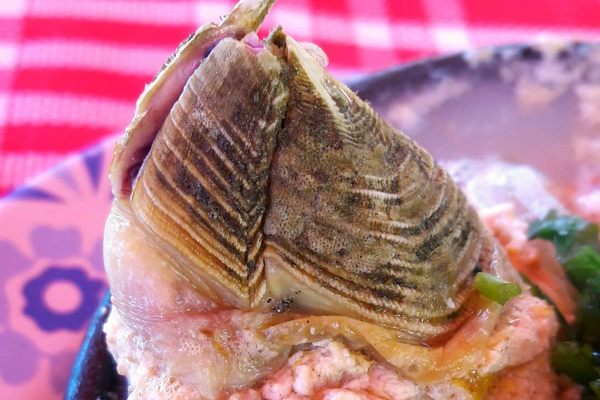Ingredients & Condiments
Merquén
In Chile's central Araucanía region, the indigenous Mapuche community still makes this smoky spice blend.
For a long time, well-to-do Chileans looked down on merquén. The spice mix, invented and traditionally used by the country’s indigenous Mapuche people, was considered too smoky, too spicy for upper class tastes, argue some food writers. While it’s fundamental to Mapuche cuisine, the spice mix rarely received attention in major tomes of Chilean cooking, part of a long legacy of eclipsing the indigenous roots of many Latin American cuisines. In the past couple decades, however, merquén is finally being recognized on a wider scale in Chilean cooking, adding color and smoke to salads, jazzing up pizzas, and livening up grilled meats
The Mapuche and, by extension, merquén call Araucanía, a region in central Chile, home. Today, Araucanía’s population is one third Mapuche. But until 1883, the Mapuche ruled the region as their own kingdom, independent from Spanish authority. Fierce fighters and savvy politicians, Mapuche leaders ensured they were one of the last indigenous South American holdouts to total colonial rule. Actual sovereignty fell during the brutal Spanish “pacification” campaigns of the 1870s and ’80s, but a separatist Mapuche government in exile claims Araucanía as sovereign Mapuche land to this day. This complex colonial history colors the current popularity of foods such as merquén and the blue eggs famously produced by the Mapuche’s Araucana chickens.
Despite the political ups and downs, Mapuche vendors still sell musical instruments, blue eggs, and sacks of spicy merquén in the local markets of Araucanía. The long, pointed red peppers used to make the spice are called aji cacho de cabra, or “goat’s horn,” in reference to the pepper’s slightly curved shape. After the February cacho de cabra harvest, Mapuche farmers dry the peppers in the sun until they become a rich purple. The aji are then hung over a wood fire to be imbued with a deep, woodsy smokiness. They’re sun-dried again before being finely ground, either with a stone mortar (the traditional way) or, more commonly today, in an electric grinder. The powder is then mixed with smoked coriander seeds and salt.
The smoky mix enjoys pride of place in several Chilean dishes. It’s the star of puré picante, mashed potatoes spiced up with ample quantities of merquén. It adds a kick to roasted peanuts, or mani merquén. The mix is also often added to pebre, the Chilean salsa. With the spice mix’s growing popularity among foodies in its native country and beyond, these days merquén-dusted dishes, from simple pasta to an upscale lobster eclair, can be found in restaurants around the world. But for the smoke and punch of the real stuff, curious diners should eschew mail-order options and go straight to the source: The Mapuche people, who resisted the Spanish Empire and whose culture will endure beyond the whims of foodie trends.
Where to Try It
-
La Vega Central Market
Davila Baeza 700, Santiago, 8320000, ChileThis massive market is a cornucopia of all things Chilean and edible, including piquant merquén, available by the kilo.
Written By
 Reina Gattuso
Reina Gattuso














